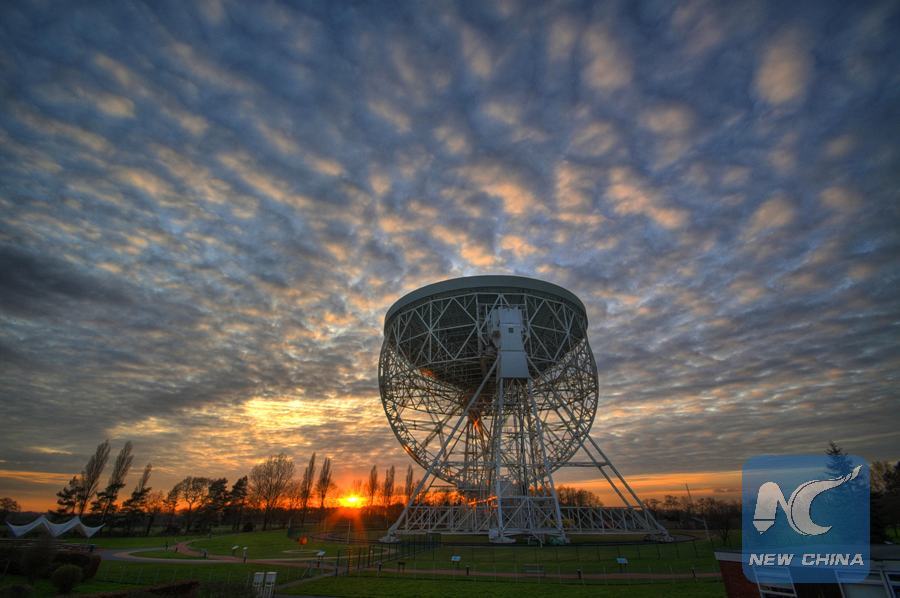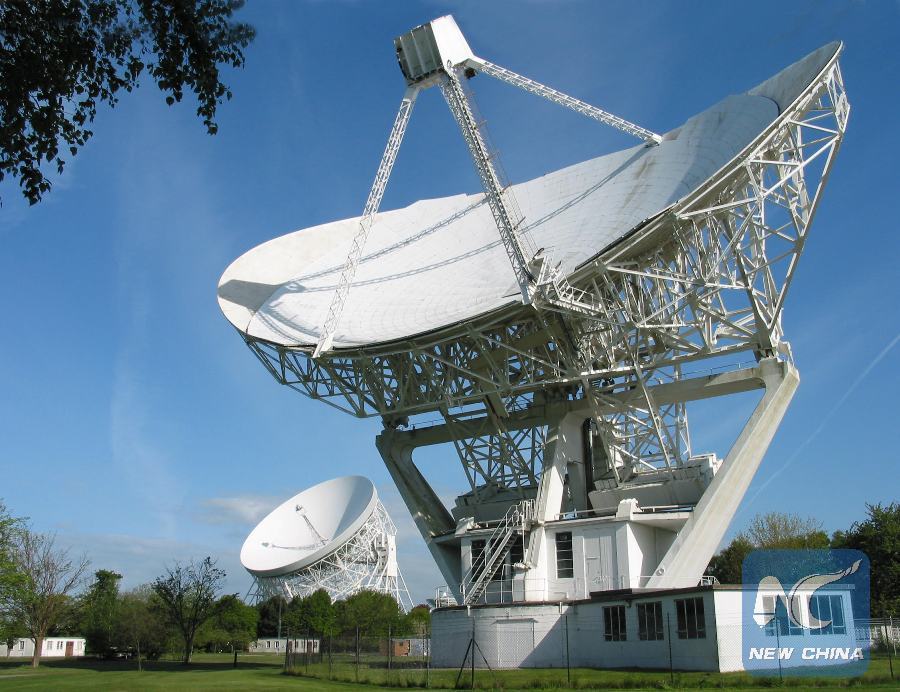
Photo credits: Jodrell 2 A Holloway/University of Manchester.
LONDON, Aug. 6 (Xinhua) -- The radio astronomy site in Britain that helped revolutionise the understanding of the universe has been given the highest level of national heritage protection.
Six structures at the Jodrell Bank Observatory, run by the University of Manchester, have been granted listed status by Historic England.
The listing means the installation has to be cared for and protected for future generations.
The main radio telescope which dominates the countryside to the south of Manchester is already a Grade I listed structure.
To mark a landmark anniversary this week for the main telescope, its sister telescope, known as the Mark II Telescope, has won the same accolade. Five original buildings and structures, including the telescope control rooms, have also won protected status.
The observatory at Jodrell Bank in Cheshire is one of the earliest sites for radio-telescopes in the world, dating from when radio astronomy started immediately after the Second World War.
It had a pivotal role in the development of the new science of radio astronomy, which was one of the first steps towards modern Astrophysics, revolutionising the understanding of the universe.
The main dish at the site is known as the Lovell Telescope, named in honor of Sir Bernard Lovell, the Manchester academic who developed the observatory, using at first ex-military radar equipment.
The government's Department for Digital, Culture, Media and Sport (DCMS) has now approved the six new listings to mark the 60th anniversary of the Lovell Telescope's "first light", the point at which it was first used to collect radio signals from the universe. In October it also celebrate 60 years since it was used to track Sputnik I at the dawn of the space age.

Photo Credits: Jodrell 3 lan Morison/University of Manchester.
Professor Teresa Anderson, director of the visitor center at the observatory, said : "Jodrell Bank has welcomed millions of visitors, drawn by its landmark scientific structures. Science is a hugely important part of our cultural heritage and we are very pleased to see that recognised and protected with these new designations."
Heritage Minister John Glen said: "Jodrell Bank has been at the forefront of scientific research and is known around the world for its important role in developing our understanding of the Universe. These listings will protect and celebrate the heritage of this significant site and help inspire the next generation of scientists and astronomers."
Crispin Edwards from Historic England, said: "Jodrell Bank is a remarkable place where globally important discoveries were made that transformed radio astronomy and our understanding of the Universe.
We are celebrating the history of the site and its impact on the world by increasing its recognition on the National Heritage List for England."
The Mark II telescope was designed by Lovell and structural engineer Henry Charles Husband who had both worked on the design of the Lovell telescope. Their prototype design for Mark II, using pre-stressed concrete mounts, was internationally adopted and is now synonymous with modern satellite telecommunications. Despite their age the Lovell Telescope, now the third largest in the world, and Mark II, continue to be at the forefront of scientific discovery.

